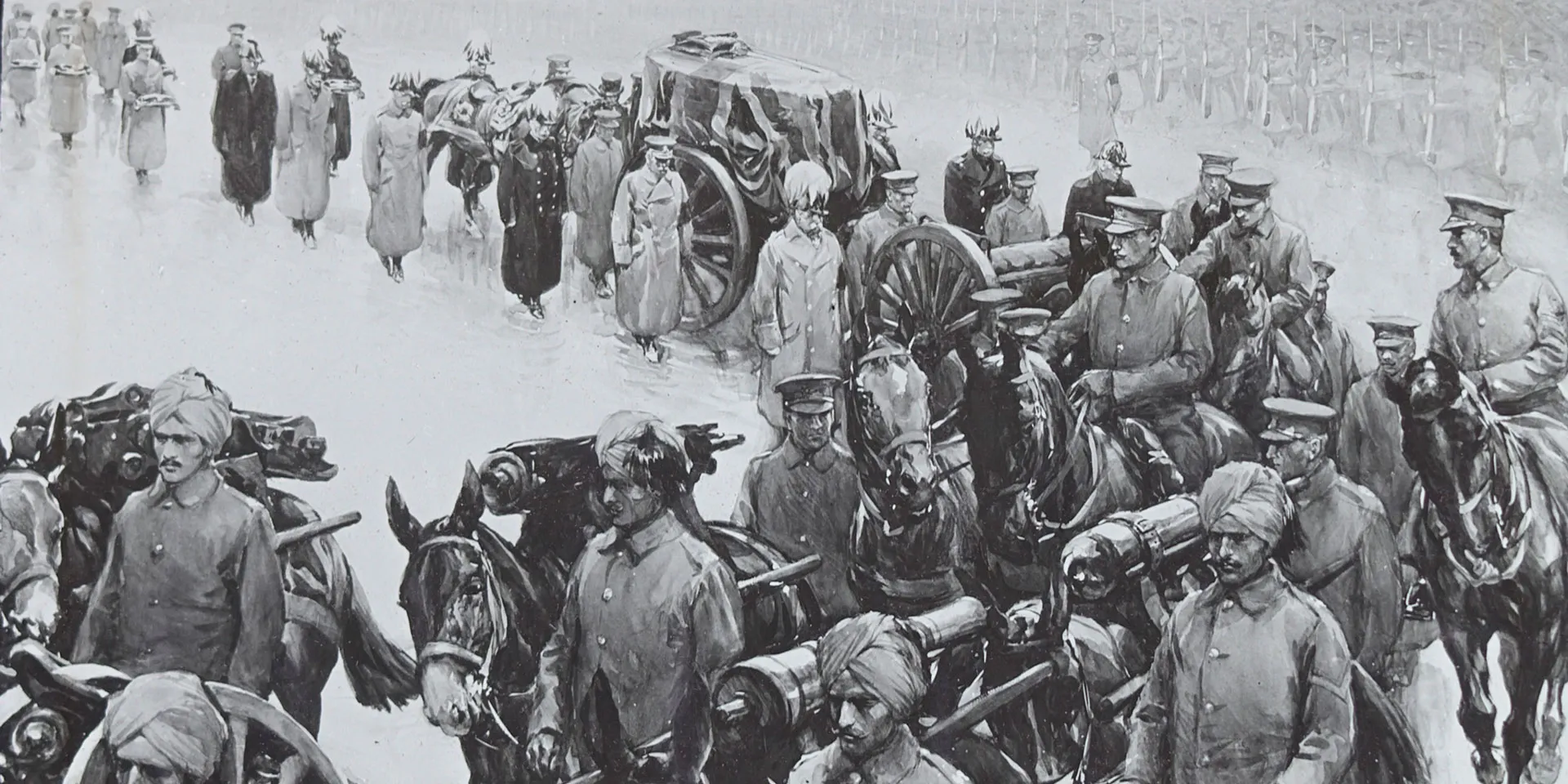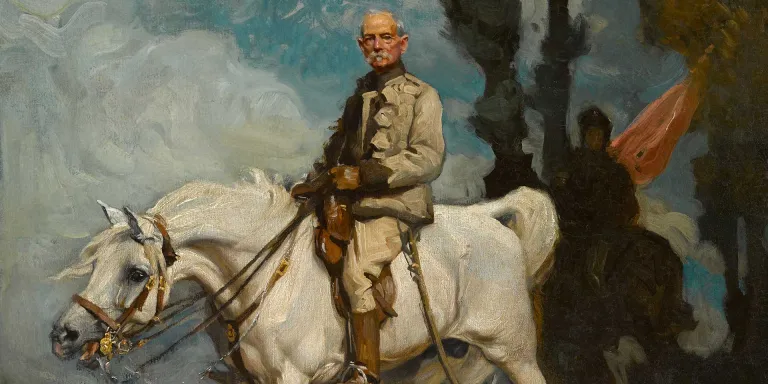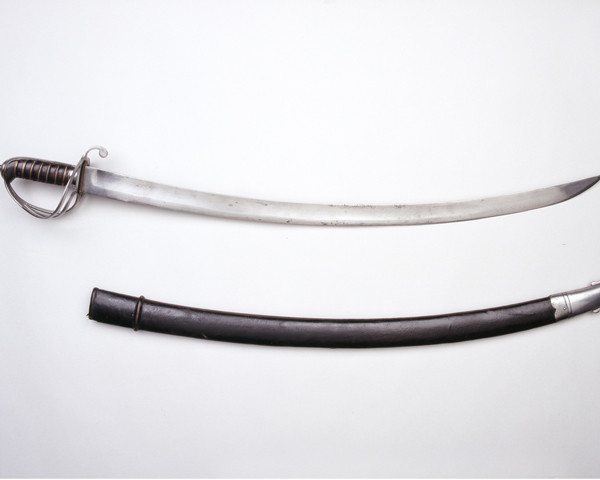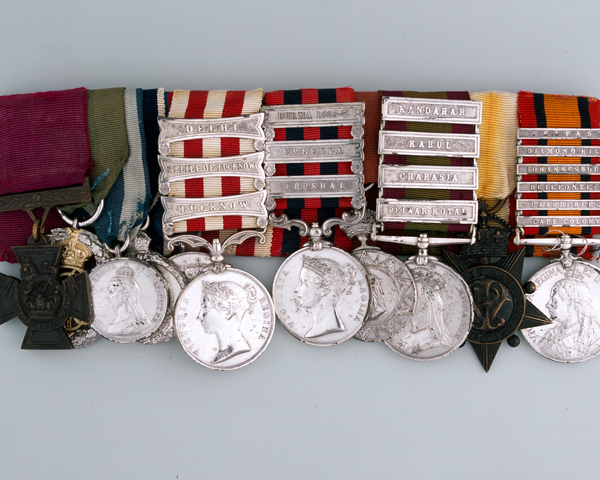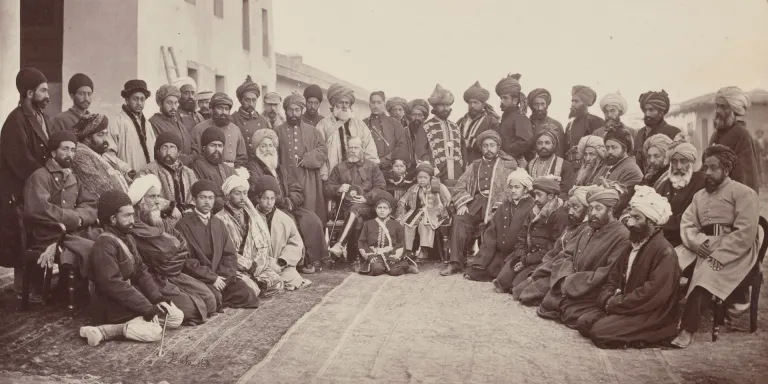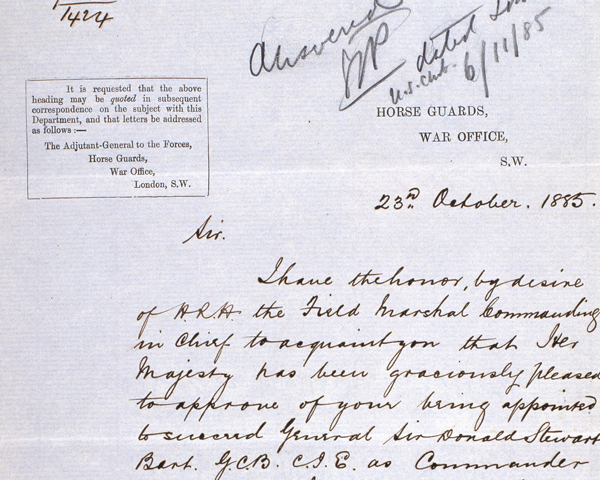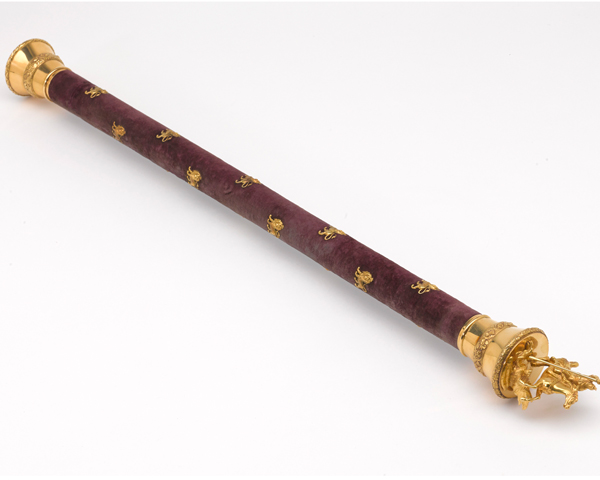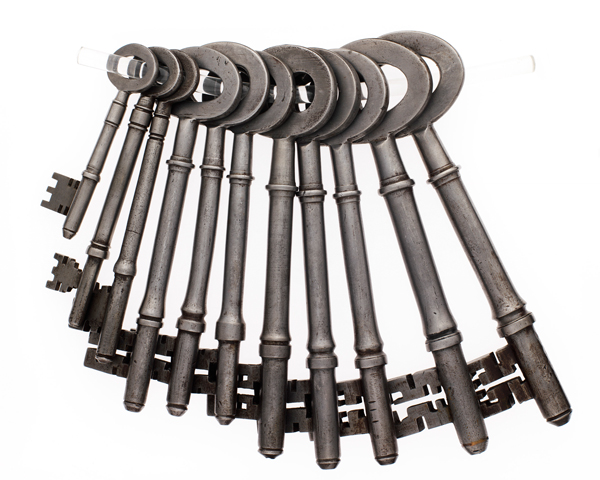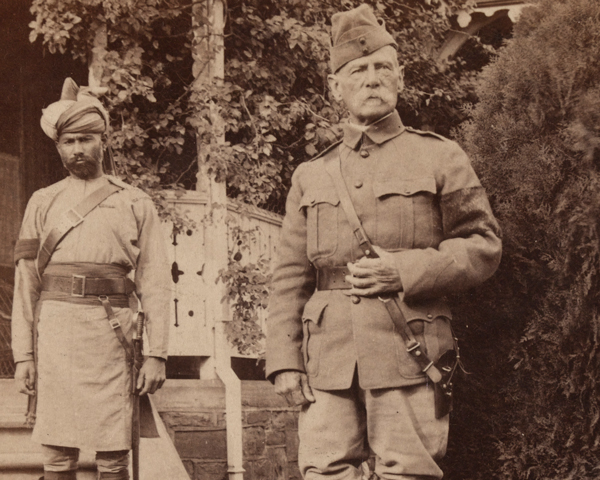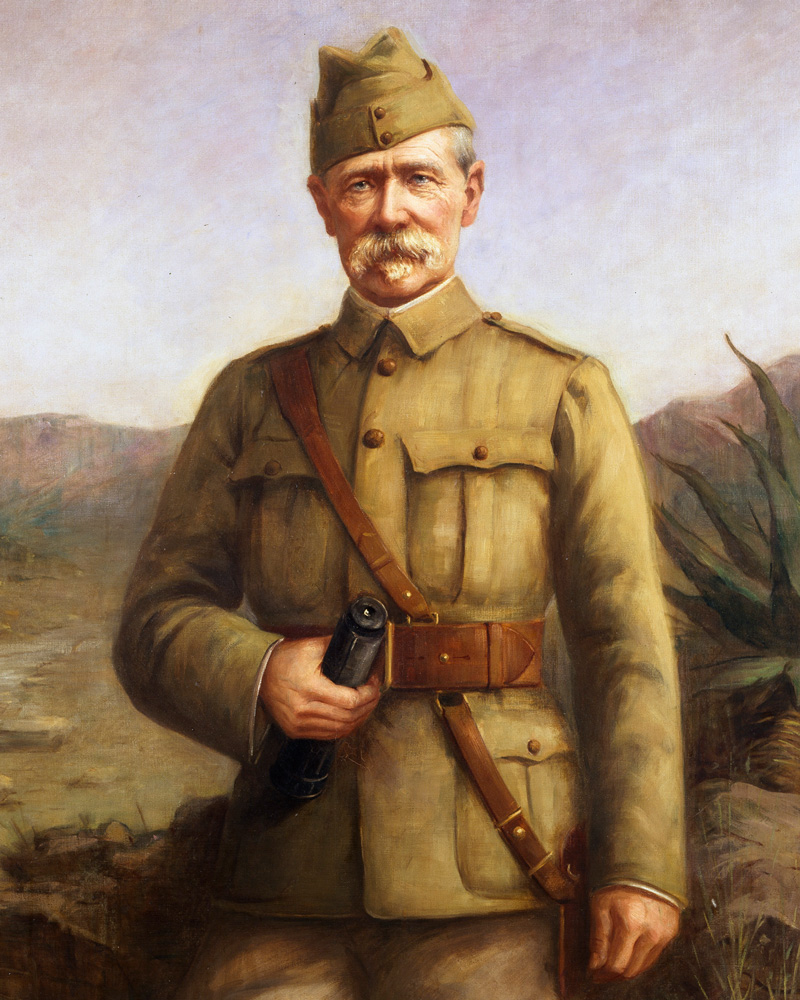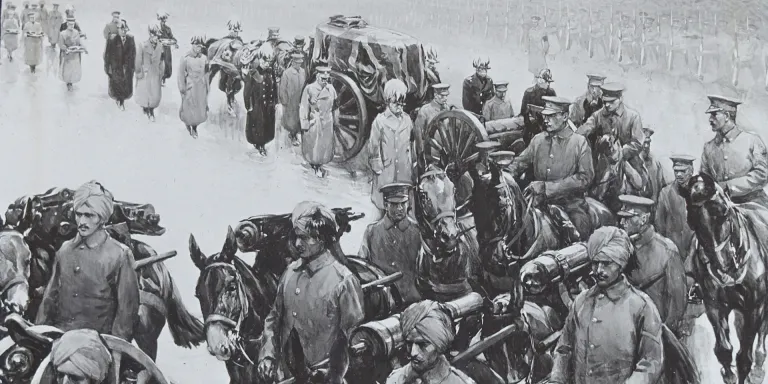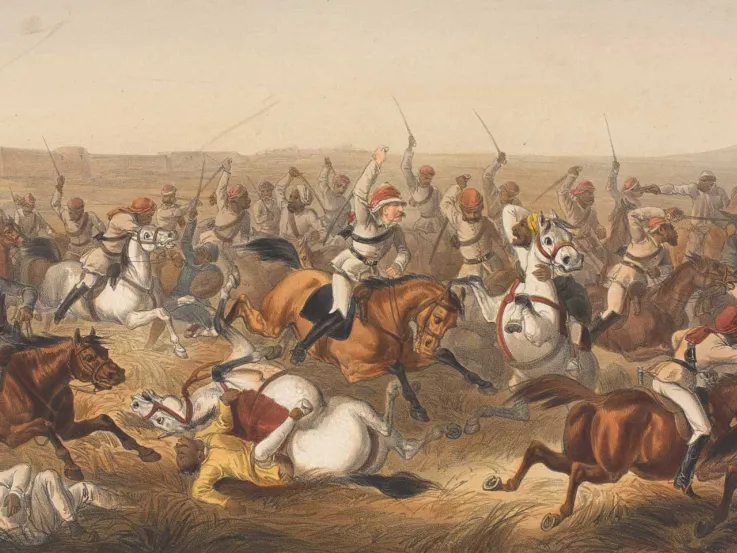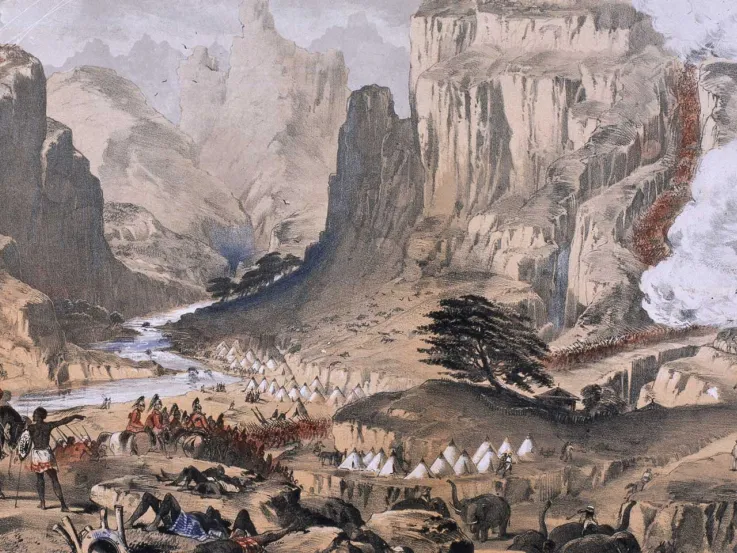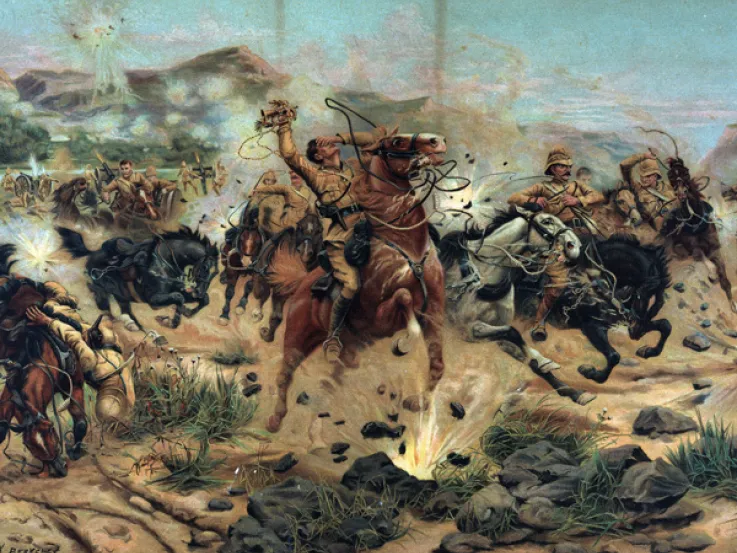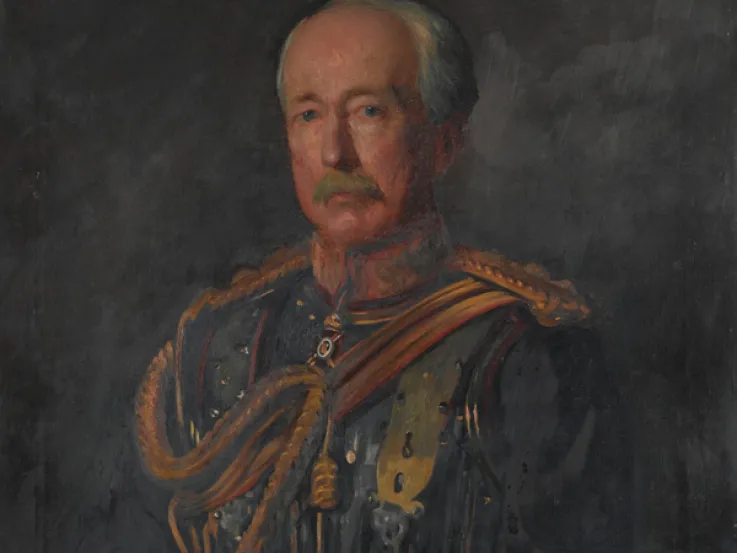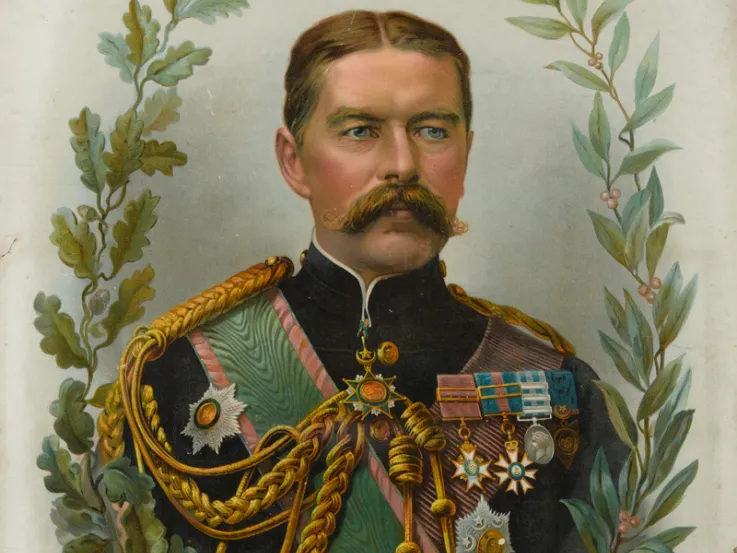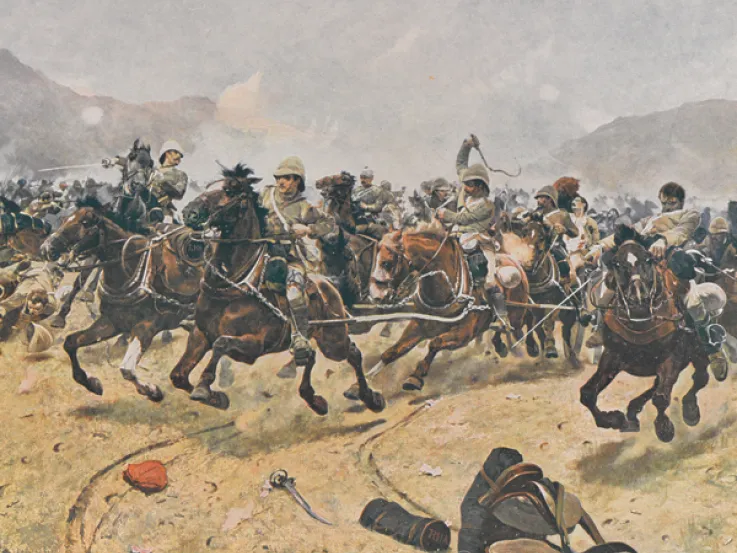General Sir Frederick Sleigh Roberts on his horse ‘Vonolel’, 1894
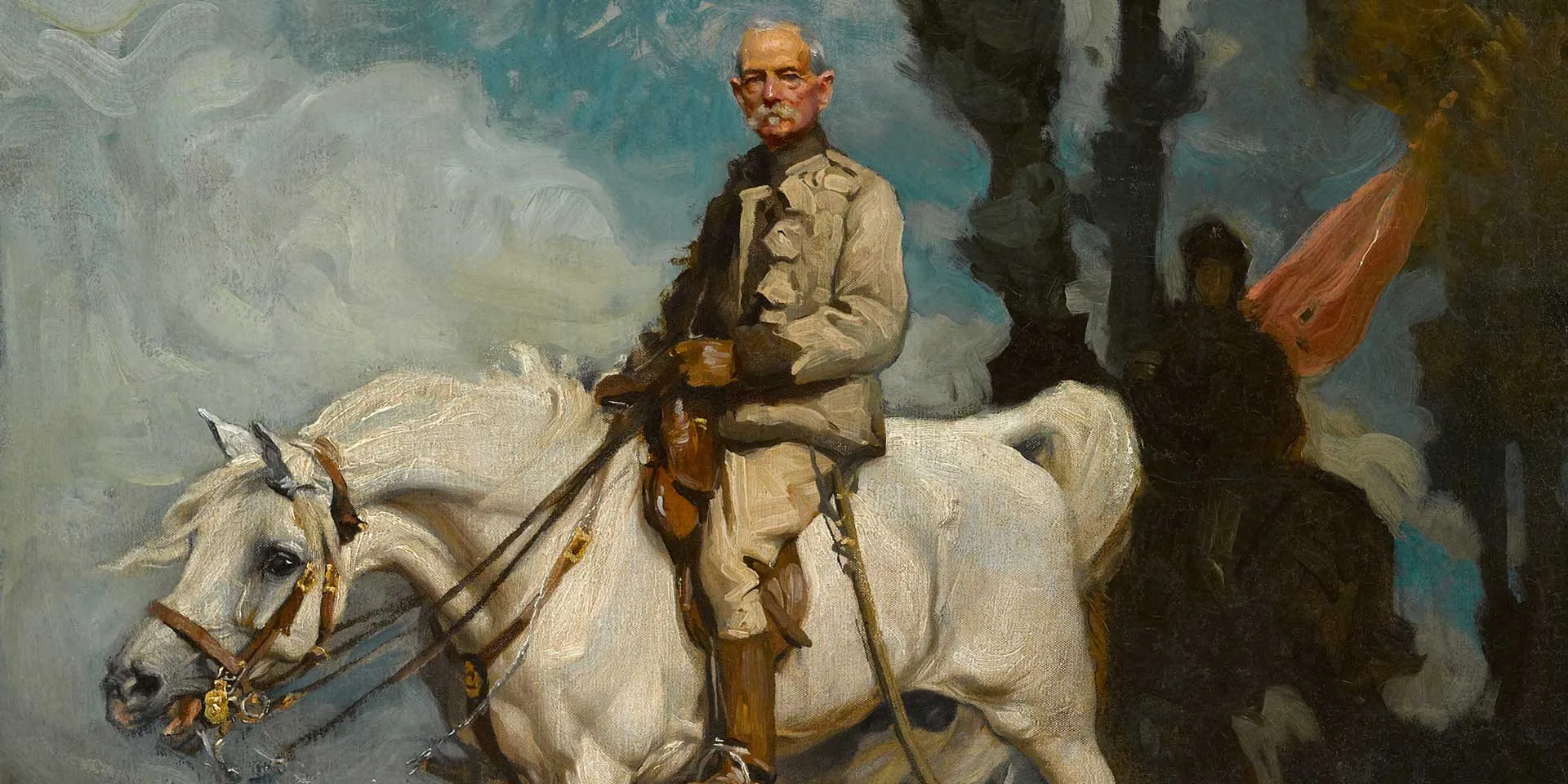
Early career
Roberts (1832-1914) was commissioned into the Bengal Artillery in 1851. His subsequent career was spent almost entirely as a staff officer, but he still saw a good deal of active service on the Indian subcontinent and in Abyssinia (now Ethiopia).
Roberts was awarded the Victoria Cross following repeated acts of bravery at Khudagani during the Indian Mutiny (1857-59). He also fought in many of the major battles of that campaign.
Sword used at the Second Battle of Cawnpore by Lieutenant Frederick Roberts, Bengal Horse Artillery, c1857
Victoria Cross group awarded to Field Marshal Frederick Sleigh Roberts, 1858-1900
Afghanistan
Roberts first came to wider public notice during the Second Afghan War (1878-80). He commanded the Kurram Field Force, leading it to victory at Peiwar Kotal in December 1878, and later the Kabul Field Force which occupied the Afghan capital in October 1879, following the murder of the British envoy.
He also led his troops on the legendary march from Kabul to Kandahar. Despite the difficult terrain and the high temperatures, he covered 280 miles (400km) in 20 days and hardly lost a man.
In September 1880, he defeated Ayub Khan outside Kandahar and relieved the besieged garrison. For his services, Roberts received the thanks of Parliament, and was appointed both Knight Grand Cross of the Order of the Bath (GCB) and Companion of the Order of the Indian Empire (CIE). The following year, he became a baronet.
General Frederick Roberts and the sirdars of Kabul, c1879
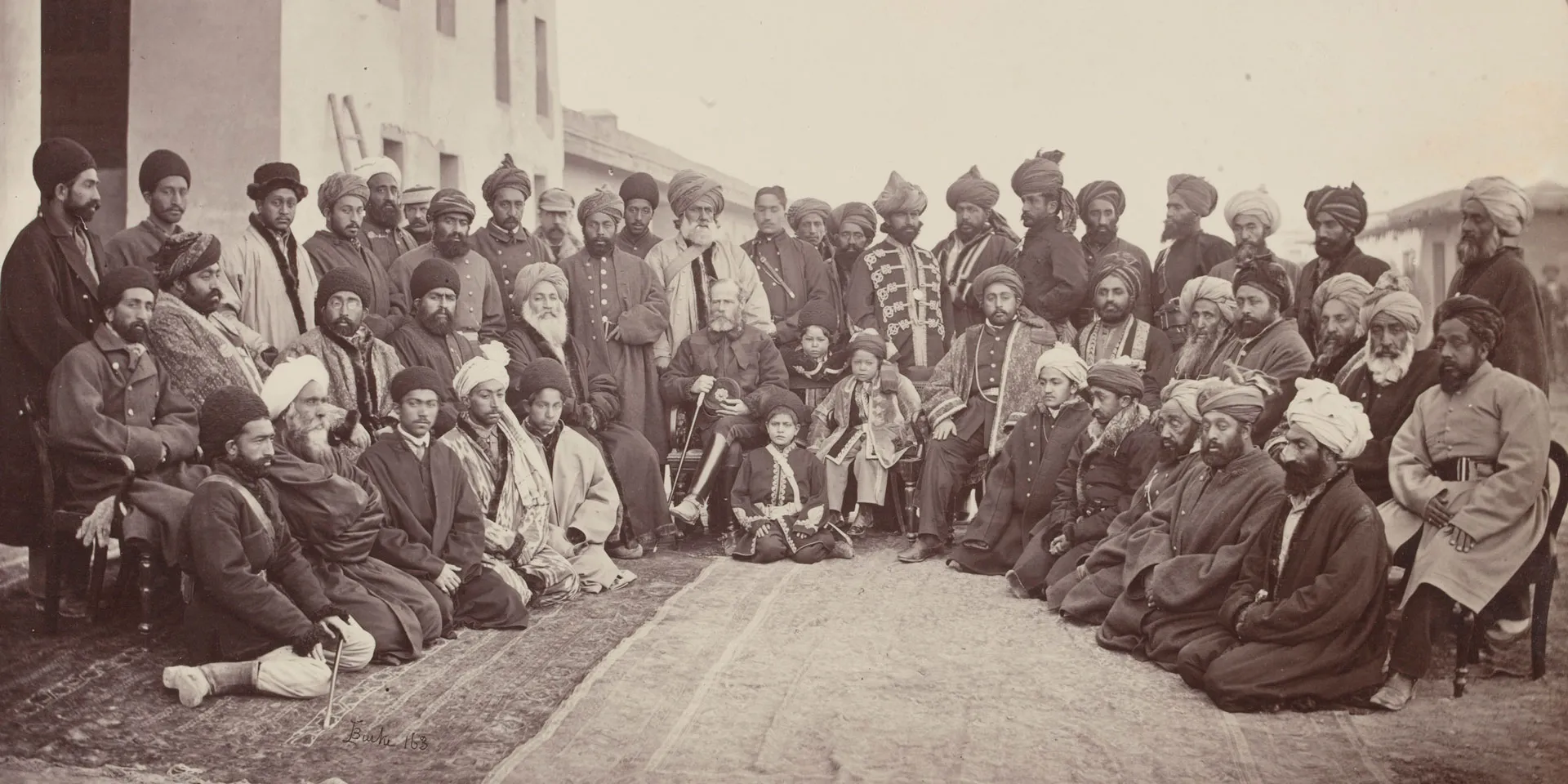
India
Roberts was promoted to lieutenant-general in 1883. After a brief appointment as Governor of Natal and Commander-in-Chief in South Africa, he was given the command of the Madras Army.
In 1885, he succeeded to the post of Commander-in-Chief in India, a position he held until 1893. He was appointed Knight Grand Commander of the Order of the Indian Empire (GCIE) in 1887 and promoted to general in 1890. Two years later, he was created Baron Roberts.
During his tenure in India, Roberts instituted many reforms of the Indian Army and greatly assisted the development of frontier communications and defence. He was made Commander-in-Chief in Ireland in 1895 and promoted to field marshal.
Letter informing Lieutenant General Sir Frederick Roberts of his appointment as Commander-in-Chief in India, 23 October 1885
Lord Roberts’ field marshal’s baton, 1895
South Africa
After the early reverses of the Boer War (1899-1902), Roberts took over command of the British forces in South Africa. From December 1899, he revitalised the British military effort, together with his Chief of Staff Major-General Horatio Herbert, Lord Kitchener.
Part of their strategy for victory included the burning of Boer farms and the internment of civilians in concentration camps. Conditions there were initially appalling and over 26,000 people - many of them children - perished from hunger and disease before improvements were made.
Official keys to Bloemfontein, Orange Free State, presented to Lord Roberts by its mayor following its capture on 13 March 1900
Field Marshal Lord Roberts at Pretoria, capital of the South African Republic, captured on 5 June 1900
Public view
Popularly known as ‘Bobs’, Roberts was kindly, unassuming and courteous. His small stature and elderly appearance - he was 68 when he left South Africa in 1900 - probably increased the veneration he received both from the public and from soldiers. Likewise, public sympathy for him grew after the death of his only son, Frederick, in action during the Boer War.
‘As a leader of men in the field he is, I believe, without equal.’
Sir Alfred Milner, High Commissioner for Southern Africa - 1900
Field Marshal Lord Roberts, c1900
Britain
On returning to Britain, Roberts was made a Knight of the Garter and created Earl Roberts. Despite a bitter rivalry with the group of officers around Field Marshal Garnet Wolseley, he was made the last Commander-in-Chief of the British Army. He held this position for three years until 1904.
Appointed to the Order of Merit, Roberts died of pneumonia at St Omer, France, during a visit to Indian troops in 1914. After lying in state at St. Paul's he was interred in the cathedral crypt.
Indian troops preceding the coffin of Field Marshal Lord Roberts, November 1914
